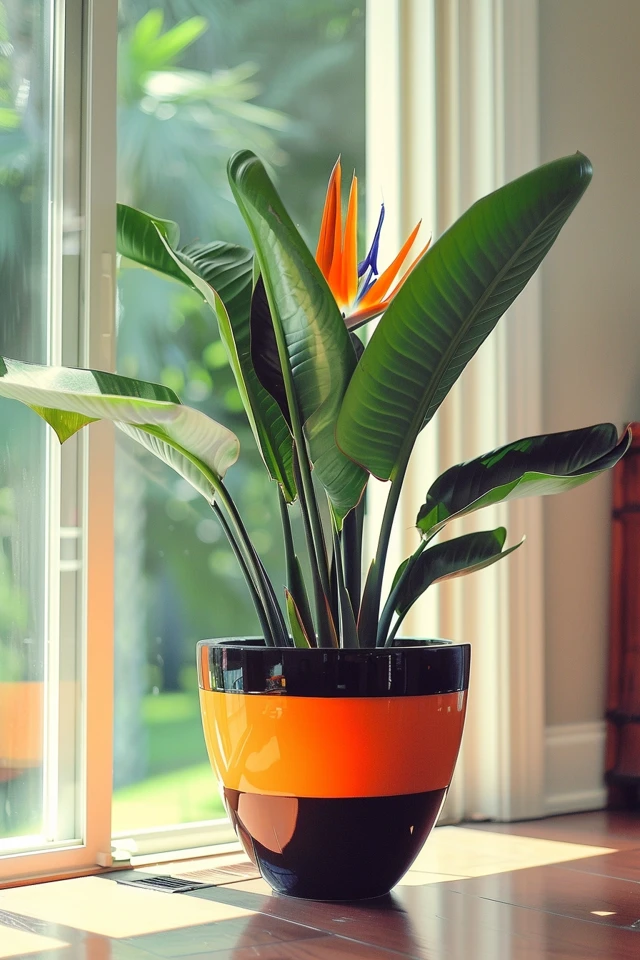Bird of paradise is a stunning tropical plant that can add a touch of exotic beauty to any room or garden. If you’ve ever wondered how to propagate bird of paradise, you’re in the right place. In this beginner’s guide, I will walk you through the steps to successfully propagate this captivating plant.
Propagation can be done through two main methods: cutting propagation and division propagation. Cutting propagation involves taking a section of the plant and encouraging it to develop roots, while division propagation involves dividing the plant’s rhizome to create new plants.
Before we delve into the specific techniques, it’s important to note that the best time to propagate bird of paradise is early spring when new growth is beginning to emerge. This ensures that the plant has enough energy to establish itself.
Key Takeaways:
- Propagation of bird of paradise can be achieved through cutting or division methods.
- Early spring is the optimal time for propagating bird of paradise.
- Cutting propagation involves rooting a section of the plant to create a new one.
- Division propagation entails dividing the rhizome to produce multiple plants.
- By following this beginner’s guide, you’ll be able to propagate bird of paradise with confidence and watch your collection flourish.

Why You Should Propagate Bird Of Paradise?
Propagating bird of paradise offers several benefits. Firstly, it allows you to keep your plant alive and enjoy it for years to come. By propagating Bird of Paradise, you are ensuring the longevity of this stunning tropical plant, enhancing the beauty of your living space.
Propagating bird of paradise also provides an opportunity to learn more about your plant and its growth patterns, which can help you better care for it. Understanding how your plant grows and responds to different conditions will allow you to provide the optimal care it deserves, resulting in healthier and more vibrant foliage.
In addition, propagation can help address issues like root emergence or overcrowding in potted plants. By separating overcrowded plants or managing root emergence, you are ensuring the continued health and vitality of your bird of paradise.
Furthermore, propagating bird of paradise allows you to multiply its beauty and create a stunning display in your space. The more plants you propagate, the more beauty you can spread around your home or garden. Imagine the breathtaking sight of multiple bird of paradise plants in full bloom, creating an oasis of vibrant colors and exotic foliage.

The Best Methods for Propagating Bird Of Paradise
When it comes to propagating Bird Of Paradise, there are two main methods to consider: division and seed propagation. Division is the most common and straightforward method, and it involves taking a portion of the plant’s rhizome to start a new plant. This method offers immediate results and can easily be incorporated into your repotting routine.
On the other hand, seed propagation requires harvesting and germinating seeds from the plant. While it takes longer for the plant to develop from seeds, it can be a rewarding option for those with the resources and patience. Seed propagation allows you to witness the growth and development of the plant from its earliest stages.
When choosing the right method for propagating Bird Of Paradise, it ultimately depends on your personal preference and the desired time frame for growth. Division is ideal if you want quick results and want to propagate the plant as part of regular maintenance. Seed propagation, on the other hand, is a great choice if you enjoy the process of nurturing plants from seed and have the patience to wait for them to mature.
Both division and seed propagation have their advantages and can lead to successful propagation of Bird Of Paradise. It’s important to consider your own preferences and circumstances when deciding which method is best for you. Whichever method you choose, it’s an exciting journey that allows you to expand your collection of these stunning tropical plants.


